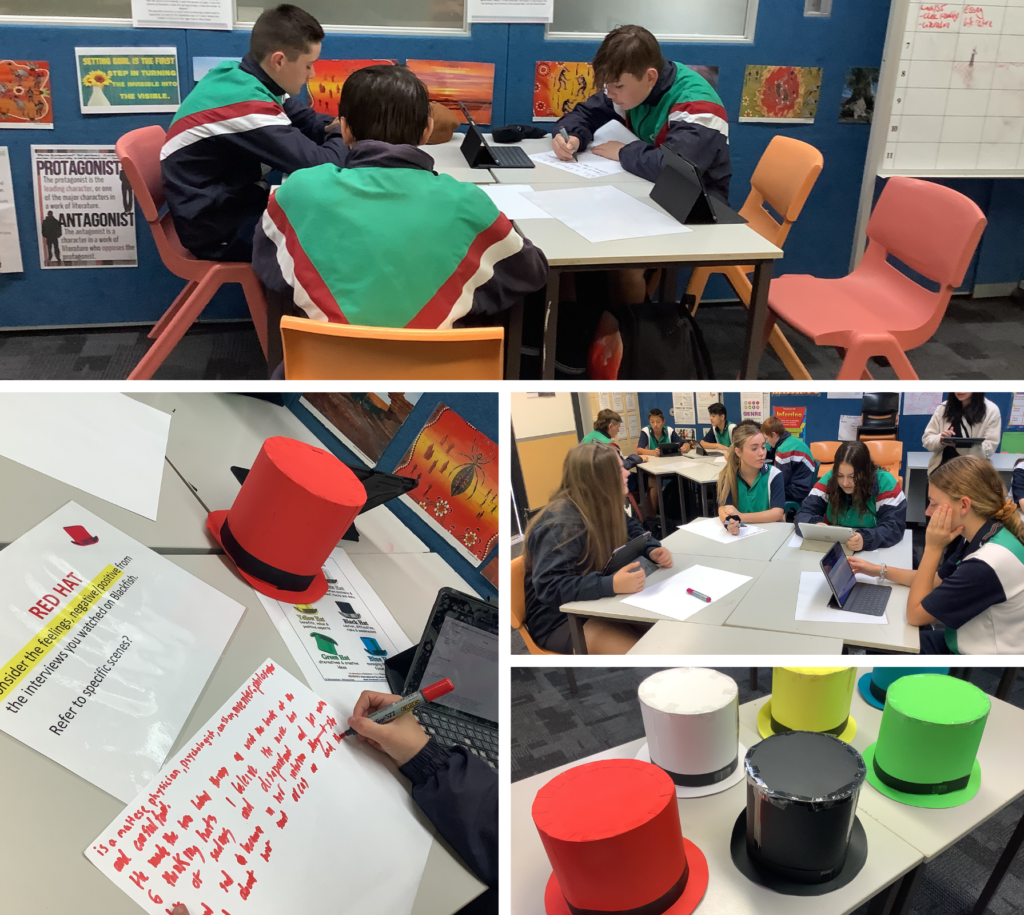
Our Year 9 English students have been using Edward De Bono’s 6 thinking hats theory to motivate, inspire and challenge them to think outside the square. Students have been studying the Documentary Blackfish, which addressed the global issue of ‘animals in captivity.’
The lesson was in 2 parts, one part was the investigation/research, the other was collating/analysing information. The documentary Blackfish seemed like an appropriate choice where the 6 thinking hats theory could be used effectively, as it invited controversial discussion, debate, rationale, personal opinions, problem solving, judgments and facts and figures.
The class was divided into 6 groups and each group was given a hat. When students saw the 6 hats, they were both intrigued and curious. There were diagnostic research/investigation activities around who was De bono and what was he famous for? What do the six hats represent? Students feedback from their research revealed a clear understanding of De Bono’s life, his book on the 6 thinking hats and a concise explanation of what each hat represented.
The rationale of each hat was used to create a task for each group, based on the documentary. For example, the White Hat group which focused on facts and data, were asked, ‘What facts and data can you find in the documentary that persuaded you to believe that Tilikum was not a killer, but a victim of captivity?’
Students worked on their specific questions related to the colour of their hats in their groups and later shared their responses with the class. Feedback was positive and students showed a great understanding of the 6 thinking hats.
I was inspired and motivated by my students enthusiasm and response to this activity. In providing this task it encouraged and challenged them to use their knowledge and skills and most importantly to think laterally. “Creativity involves breaking out of established patterns in order to look at things in a different way.” Edward De Bono.
Mrs Ralph – English Teacher
